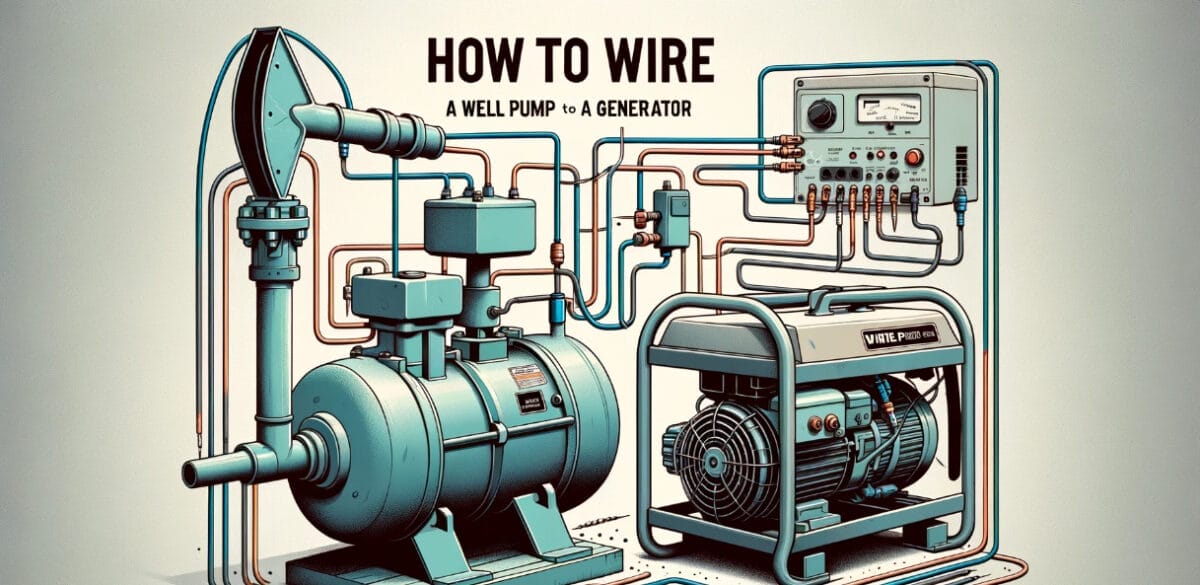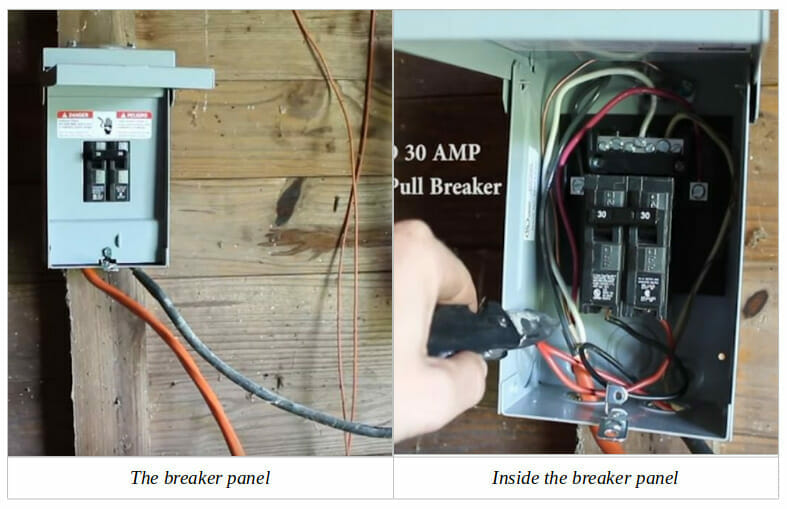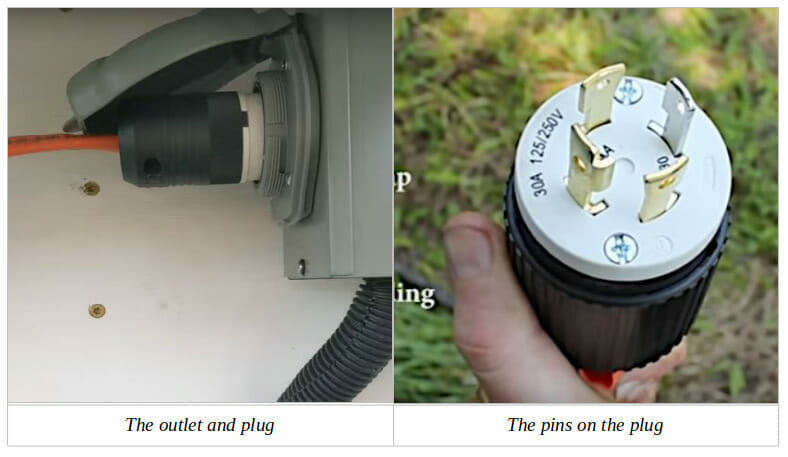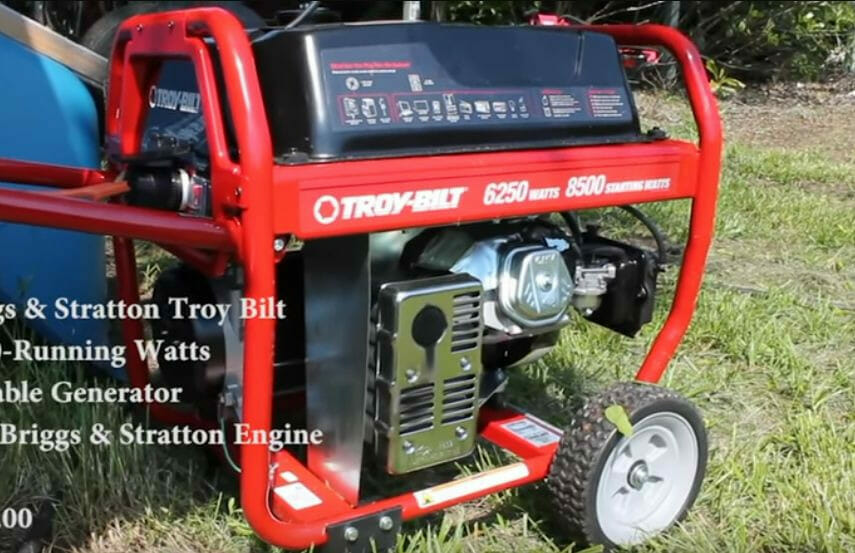How to Wire a Well Pump to a Generator (Guide, Steps, Safety)

Wiring a submersible well pump to a generator makes it possible to power the pump during a power outage.
It’s a great solution if the power outages are frequent. So, follow this guide if you’re ready to wire your well pump to a generator.
Quick Summary: Wire the well pump to a generator using a double-pole breaker at the subpanel to connect the power cable (containing 10/3 wires) from the generator to the well pump’s power cable. At the other end of the generator’s power output cable, connect the wires inside the plug (in a 4-pin 240V plug): the hot wires to the X and Y terminals, the neutral one to W, and the ground one to G.
First, let’s go through some important considerations before you start wiring.
Considerations Before Wiring
A typical ½ to 2 HP well pump can be adequately powered by a 3 to 4 KW generator.
Use the table below to know what capacity generator you will need. It’s only a rough guide. Check the pump and generator labels or manuals for the exact specifications. It must handle the generator’s starting wattage, which is higher than its running wattage.

However, I don’t recommend using the generator unnecessarily or for long periods. Only use it when there is no main power as an alternative electricity source because unless you have a powerful generator, an underpowered one can cause overheating.
Generally, the longer the power outages you experience, the greater the generator’s required capacity so you can use it for long periods.
Also, consider the following before wiring a well pump to a generator:
- Pressure: If installing a pump, calculate the required pressure and choose the right type according to its intended uses.
- Pipes: I recommend using flex pipes because they can help reduce the noise due to pump vibrations in rigid connections.
- Bypass Line: When connecting the pipeline’s inlets and outlets, create a bypass line. It will prevent an interruption in the water flow while removing the pump.
- Switching: Install a double-pole breaker (as described in this article) for a permanent generator connection or in combination with a transfer switch to handle the power loss situations automatically. Also, locate it close to the well pump if you can to easily switch the power unless locating it remotely is more convenient.
- Outlet – Install a dedicated outlet for the well pump.
- Wiring: Use a double-ended wire to connect the well pump and generator. A typical 30-amp system normally requires 10/3 wire.
- Grounding: Ground the generator. Connect it to a grounding pole or welding wire.
Things to Avoid
Don’t use a generator with an inverter. It’s an unsafe combination, as either one or both of them can easily get damaged.
Wiring a Well-Pump to a Generator
Step 1: Identify the Wiring
The wires shown below, coming from the top of the bore containing the submersible pump, attach to a relay (inside the small black box). The red tank is an extension tank. A black cable from this relay (with 3 wires inside) goes to the nearby subpanel.

Step 2: At the Breaker Panel
The black and (or red) cables going into the breaker panel contain two hot wires each, as it’s a 240-volt system. The neutral (white) and ground (bare copper) wires are tucked inside, so they are not visible outside.
The black cable going into the breaker panel comes from the relay switch. It contains two hot (black and red) wires and a neutral one.
The orange cable comes out of the panel to connect to the generator. It contains the same set of wires. The bare copper from it is also grounded at the panel.
A single double-pole switch controls both circuits of 30 amps each.

Step 3: The Outlet
The plug below is at the other end of the orange cable coming from the subpanel. It’s a 30-amp 125/250-volt black/white 4-wire grounding plug with 4 pins.

When you open the screws on the end, the terminals will be marked as follows (or similar):
- X and Y for hot (the black and red wires, or black only in a 110-volt system)
- W for white (the neutral wire)
- G for ground (the bare copper, yellow, or green wire)
You can connect the orange cable to a fixed outlet, as shown above (on the left), or directly to the generator, especially if it’s a portable one, as shown below.

Troubleshooting
Struggling Well Pump
If the well pump is struggling to extract water while connected to the generator, the generator might not be operating at full speed or be underpowered.
If the generator is being shared, disconnect the other appliances to see if it makes a difference.
Well Pump Not Working
There are several possible reasons. Check for the following:
- The generator’s voltage output – Might be insufficient to power the well pump.
- The generator’s power capacity must be powerful enough to operate the well pump.
- The generator – Is it a working generator?
- The wiring – Ensure there is no break or damage in the wiring.
- Connection points – Ensure all the connections are secure. They should never be loose.
If the well pump was working before, i.e., it works when connected to the main distribution power, the problem is probably with the generator, the wiring to the pump, or the outlet.
If the generator works when powering something else, you can eliminate it as the problem unless it’s underpowered.
Hire an electrician if you’re unable to get the well pump working.
References
Tony Scheidel
Yanasa TV
